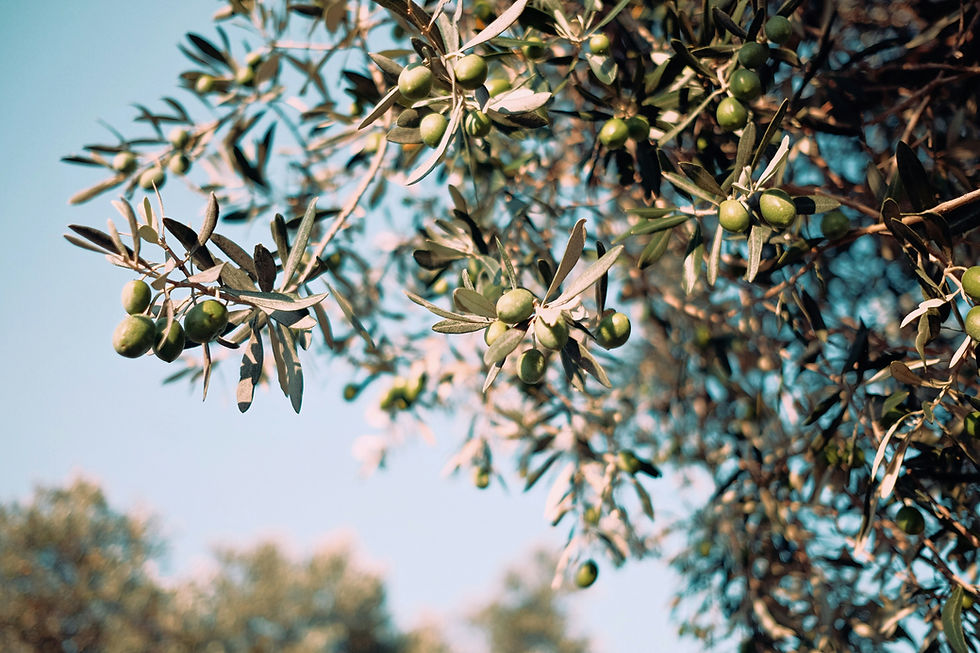Arriving in Alentejo
- Wende Brand

- Feb 10, 2024
- 3 min read
Updated: Mar 3, 2024
Arriving in Alentejo almost a year ago I have seen all the seasons of this beautiful region in Portugal. Alentejo is much more than just cork oaks, eucalyptus and stone pines. There is a multiplicity of species here so that every day for me there was a little discovery that marveled me.

Orange trees having flowers and fruit at the same time
The greatest change is the change from the dry season (May till September) to the wet season (October till April). The sun burnt landscape undergoes a total transition from brown to lush green. Small streams start to flow and little waterfalls emerge. With the coming of the rains, Alentejo shows quite another side of the image of a South European country that many of the North Europeans know when they go en masse on the summer holiday. There are several species of salamander here, as well as frogs. I even have seen a little green tree frog sitting on a leaf after a day of rain. Snails and slugs appear and during rain and relatively warm nights, the frogs croak even in the midst of winter. For five months of the year, they hide from the scorching sun and high temperatures rising all the way up to 40+ degrees Centigrade. It is amazing that they can survive these dry and hot summer months.

Winter in Alentejo is a prolonged spring. Trees start to blossom and on the floor a carpet of plants emerges and flowers. Many of the trees bear fruit and have flowers at the same time, a trait you see mostly in tropical trees. In this respect Alentejo is like a transition zone between three regions: the relatively cold north of Europe, the Mediterranean flora and some (sub)tropical species that are able to survive here, such as bananas, macadamias and taro. There are even wetlands here that fill up with water after the first rains start to fall in September and October. Sometimes the land looks like Africa with white herons searching for amphibians and insects that are disturbed by the brown cows grazing the land.
Wende in her new habitat

Strelitzia Regina or Bird of Paradise flower
Being on the crossroad between the moderate north of Europe and the (sub)tropical regions of Africa, Alentejo is capable of nurturing a wide variety of plants in a garden, like the exotic Bird of Paradise flower from South Africa, but also several species of apple and pear that are associated more with the northern parts of Europe. Orange trees bear fruit in winter next to a vegetable garden with carrots, cabbage and fava beans. In sheltered areas, near the sea or in greenhouses the tropical Mango and Avocado can be grown standing next to the Olive trees that grow everywhere in the Alentejo landscape. The possibilities of creating Gardens of Eden are almost limitless.

Water retention in practice at Tamera, healing biotope in Portugal
The only thing that is important here is to manage the water well. Water retention is pivotal. This means creating a healthy diversity of native and non-native plants, trees and flowers, and most importantly, healthy soil. Healthy soil can contain a variety of plants and together they are able to keep the water on the land. The opposite, unfortunately, is true in many places in Alentejo and the whole of South Europe as well. During heavy rainfall, the water cannot be absorbed by the sun-scorched and dry barren soil. As a consequence erosion takes place and instead of absorbing the water it runs down in yellow-brown rivers that go instantly to the rivers and end up in the Atlantic Ocean. A beautiful and lush garden and landscape therefore is not only beautiful or functional for food production, it is also a way to retain the water that falls on the land.

Garden of Eden in the Azores, Portugal
It is said that most recently emerging deserts are man-made. I think that is true. Industrial methods of food production are harmful to the soil and biodiversity. It destroys the capacity of the land to be resilient in both droughts and heavy rainfall. Creating gardens with respect to the local fauna and flora is a way to combat the desertification of the land. So, let's create Gardens of Eden!
Wende




Comments